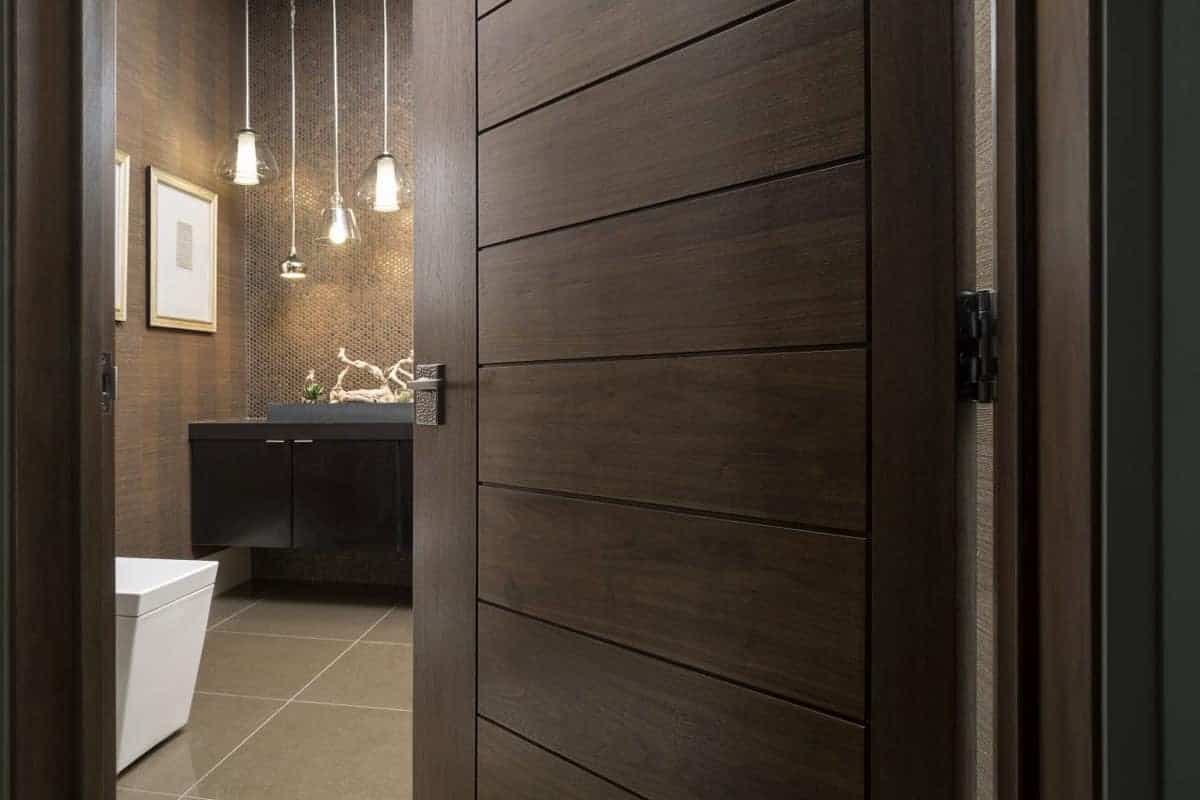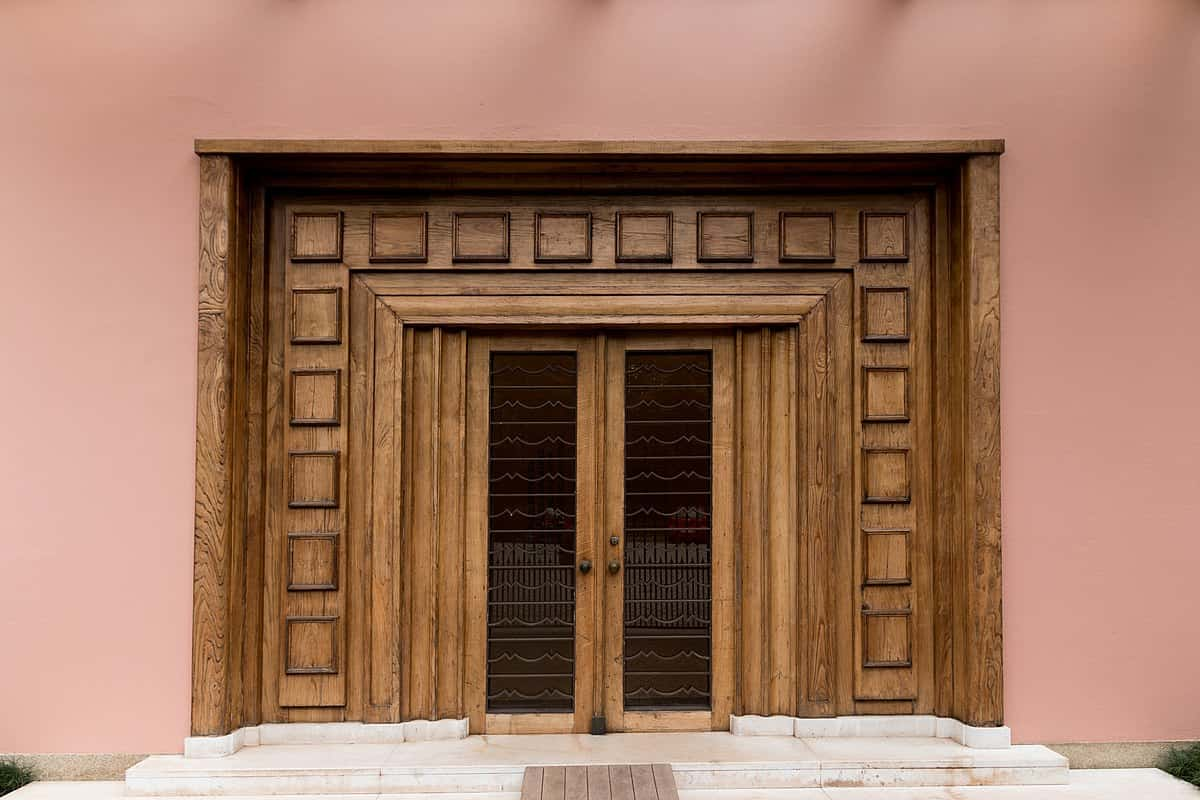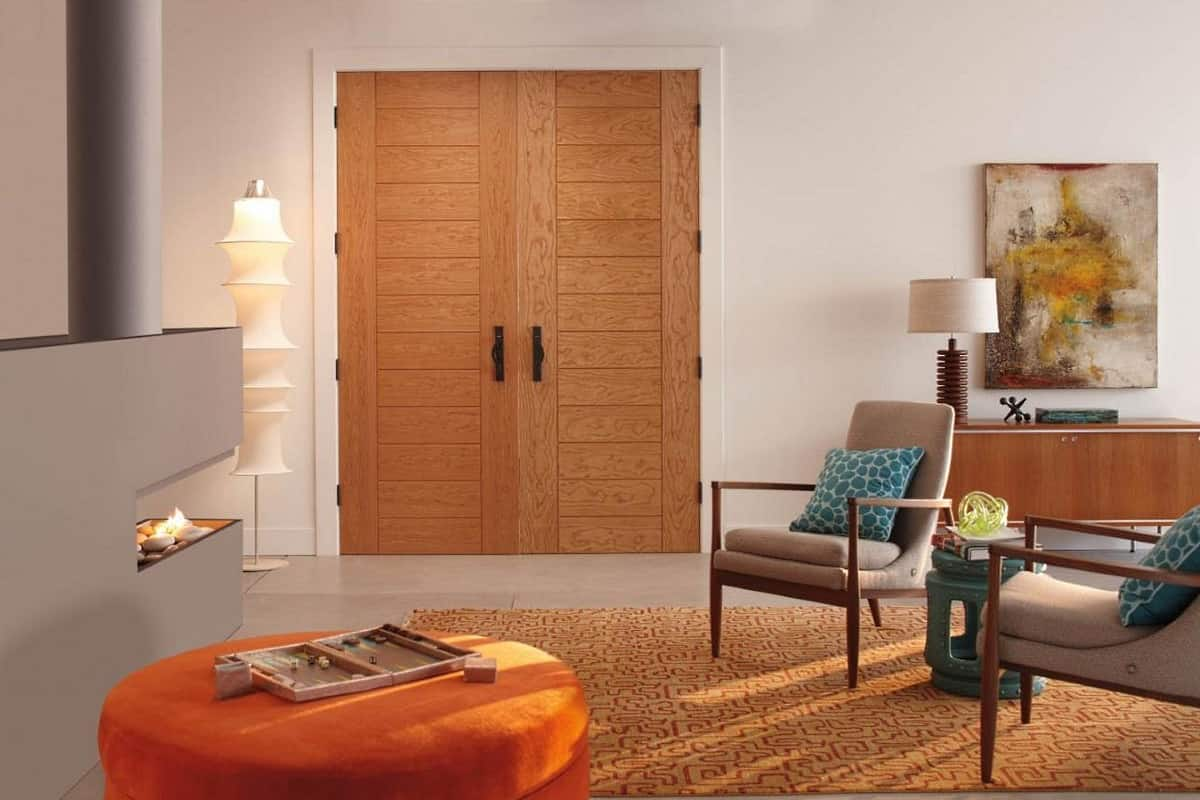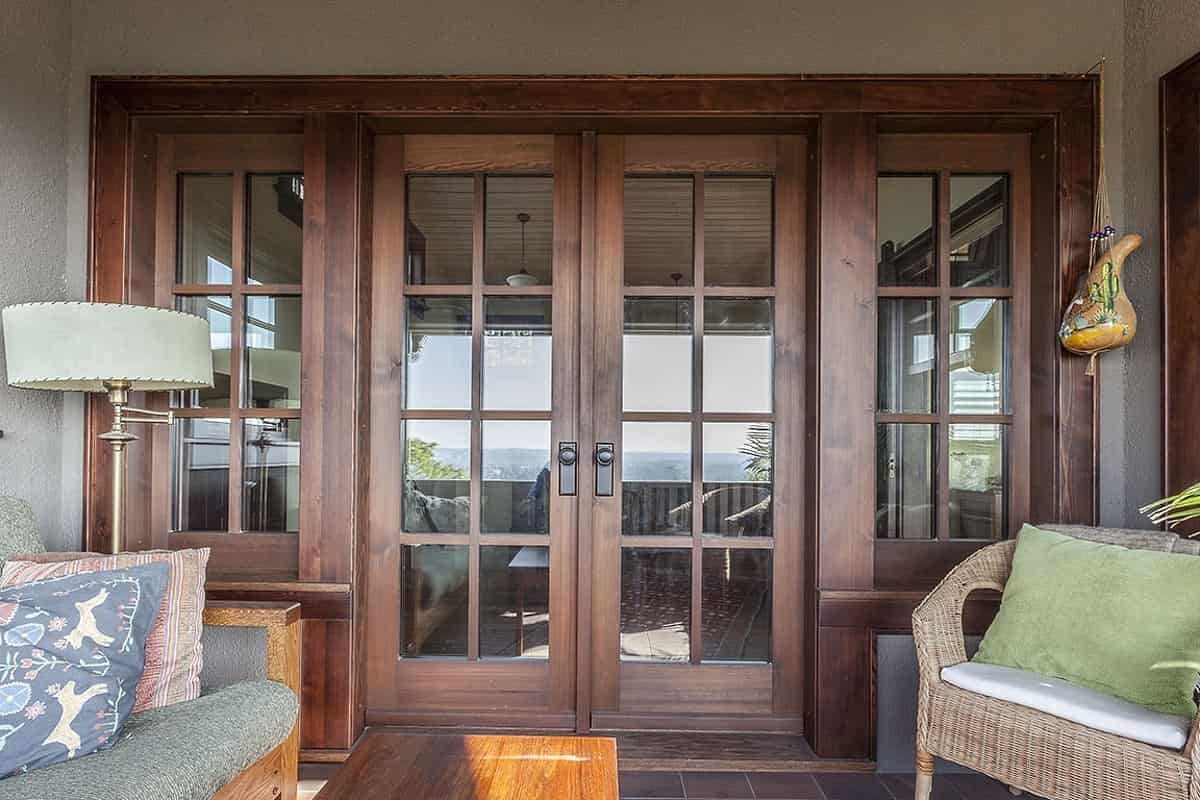A solid wood door has several advantages, like being strong, robust, and having lovely grain, while MDF interior doors have several cons, too. Read our complete ‘vs’ comparison article to know which one to pick. Solid wood shrinks in response to variations in temperature and humidity. Cabinets, doors, or panels constructed of solid wood are susceptible to shrinking, cracking, or buckling if these circumstances are not properly managed. In many ways, medium-density fiberboard (MDF), a premium composite material, outperforms solid wood. MDF is created from resin and reclaimed wood fibers and is machine dried and pressed to create sturdy, thick sheets. MDF is more resilient to temperature and humidity fluctuations than real wood and is more stable. When temperatures and humidity change, solid wood boards often expand and shrink both horizontally and vertically. Because of this, solid wood cabinets, doors, and paneling need a lot of upkeep. MDF performs better than solid wood when it comes to the creation of painted cabinet doors. When making solid wood doors using the traditional frame and panel technique, five different components are joined together: four frame pieces and a central panel that is slightly smaller than the framework so that it may float and accommodate expansion and contraction. Compared to real wood, MDF is more easily accessible in considerably bigger sizes—5-foot by 12-foot panels, for instance. These substantial sheets may be machined into wainscot or bead board panels. An MDF panel's surface has no discernible grain, unlike real wood. Therefore, using MDF eliminates the issue of wood grain and knots showing through paint or stain.  Additionally, MDF often offers a better value. Solid wood is often more costly and perhaps less accessible. In certain situations, such as paneling and wainscoting where big sheets may be utilized, MDF can be more cost-effective. When comparing wood to an MDF board, this is a typical misconception. In general, people see wood as being robust and solid, whereas MDF is considered the less expensive and inferior option. Do you think of flat-pack furniture? These opinions most likely originated when MDF was a new product. Yes, it was less resilient than solid wood. However, thanks to technological developments, MDF is now a "solid" competitor in the production of doorframes, offering a dependable and affordable substitute for its real wood equivalent. Now, this is merely a choice you should think about; it doesn't imply that MDF is superior to real wood. In this article, we compare the benefits and drawbacks of solid wood versus MDF for your doorframes to make it easier for you to confidently choose fire-rated door sets. Simply said, solid timber is natural lumber made entirely of wood. This implies that unlike "engineered wood," you won't find a combination of veneers, fibers, resins, or adhesives. Solid wood is durable and powerful, so it will endure for many years. In reality, solid lumber has been utilized to support large structures and bridges all throughout the globe. It also has more structural stability, so it doesn't need extensive repairs. When correctly chosen, you may get a finish that is uniform and far more aesthetically pleasing. No matter whatever choice you choose, painting or polishing it will provide a top-notch effect. This makes it simpler to process and results in a higher machined finish overall.
Additionally, MDF often offers a better value. Solid wood is often more costly and perhaps less accessible. In certain situations, such as paneling and wainscoting where big sheets may be utilized, MDF can be more cost-effective. When comparing wood to an MDF board, this is a typical misconception. In general, people see wood as being robust and solid, whereas MDF is considered the less expensive and inferior option. Do you think of flat-pack furniture? These opinions most likely originated when MDF was a new product. Yes, it was less resilient than solid wood. However, thanks to technological developments, MDF is now a "solid" competitor in the production of doorframes, offering a dependable and affordable substitute for its real wood equivalent. Now, this is merely a choice you should think about; it doesn't imply that MDF is superior to real wood. In this article, we compare the benefits and drawbacks of solid wood versus MDF for your doorframes to make it easier for you to confidently choose fire-rated door sets. Simply said, solid timber is natural lumber made entirely of wood. This implies that unlike "engineered wood," you won't find a combination of veneers, fibers, resins, or adhesives. Solid wood is durable and powerful, so it will endure for many years. In reality, solid lumber has been utilized to support large structures and bridges all throughout the globe. It also has more structural stability, so it doesn't need extensive repairs. When correctly chosen, you may get a finish that is uniform and far more aesthetically pleasing. No matter whatever choice you choose, painting or polishing it will provide a top-notch effect. This makes it simpler to process and results in a higher machined finish overall.  To put it another way, a strong wood doorframe can survive fire for up to 90 minutes. Timber is simple to handle for big volume orders, making the installation and assembly procedure less difficult on busy locations. In many cases, genuine wood is less expensive than MDF! Solid wood may be utilized efficiently in situations that are prone to dampness and water since it has some water resistance. In contrast to MDF, solid wood is more easily accessible, coming from a variety of nations and manufacturers. fewer production processes, materials, and resources. It is thus more environmentally friendly than other types of engineered wood. Premium hardwoods will cost more than veneered MDF if you're shopping for them, but for good reason: they will last longer. Solid wood is available in a wide range of lengths, making waste estimation difficult. When subjected to abrupt fluctuations in temperature and humidity, wood will either expand or compress. However, if your building is effectively controlled, this won't be an issue. Not to seem paradoxical, but your doorframe may be exposed to water damage, such as rot and mold if it is not properly polished and sealed. As with everything natural, you could encounter imperfections like splits or knots. However, the maker of your fire door set should be able to recognize this.
To put it another way, a strong wood doorframe can survive fire for up to 90 minutes. Timber is simple to handle for big volume orders, making the installation and assembly procedure less difficult on busy locations. In many cases, genuine wood is less expensive than MDF! Solid wood may be utilized efficiently in situations that are prone to dampness and water since it has some water resistance. In contrast to MDF, solid wood is more easily accessible, coming from a variety of nations and manufacturers. fewer production processes, materials, and resources. It is thus more environmentally friendly than other types of engineered wood. Premium hardwoods will cost more than veneered MDF if you're shopping for them, but for good reason: they will last longer. Solid wood is available in a wide range of lengths, making waste estimation difficult. When subjected to abrupt fluctuations in temperature and humidity, wood will either expand or compress. However, if your building is effectively controlled, this won't be an issue. Not to seem paradoxical, but your doorframe may be exposed to water damage, such as rot and mold if it is not properly polished and sealed. As with everything natural, you could encounter imperfections like splits or knots. However, the maker of your fire door set should be able to recognize this.  MDF is essentially a substance made of wax- and resin-mixed fibers, reclaimed wood, and resin. Size, consistency, glue type, and kind of fibers used during manufacturing are just a few variables that will affect how strong MDF is. It has a constant finish since it is man-made. Perfect if you want to designate a line of doors with identical appearances. Since MDF is constructed of man-made materials, it doesn't have any inherent flaws as genuine wood alternatives could. Smooth texture makes painting on it simple and produces an appealing end product. FD60 fire door sets are allowed in a broad range of applications, despite the fact that they may not be as fire resistant as certain solid woods. may create doorframes with increased width out of a single component. Contrary to popular belief, MDF weighs more than actual wood. The fibers, glues, and other ingredients used to make the material are mostly to blame for this. It is vital to take into account the kind of MDF being used since excessive exposure to water may cause the material to deteriorate. Moisture-resistant or semi-water-resistant MDF is offered for a higher price but comes in a smaller range of thicknesses and lengths. MDF can't handle a lot of weight, as anybody who has put together flat-pack furniture will know. This implies that in order for your MDF doorframe to serve its purpose, the structure will need to be carefully fixed. The doorframe's quality may be subpar if the edges are improperly painted. Thus, completing on-site won't be your greatest choice. Instead, think about having your MDF fire door set frame factory finished.
MDF is essentially a substance made of wax- and resin-mixed fibers, reclaimed wood, and resin. Size, consistency, glue type, and kind of fibers used during manufacturing are just a few variables that will affect how strong MDF is. It has a constant finish since it is man-made. Perfect if you want to designate a line of doors with identical appearances. Since MDF is constructed of man-made materials, it doesn't have any inherent flaws as genuine wood alternatives could. Smooth texture makes painting on it simple and produces an appealing end product. FD60 fire door sets are allowed in a broad range of applications, despite the fact that they may not be as fire resistant as certain solid woods. may create doorframes with increased width out of a single component. Contrary to popular belief, MDF weighs more than actual wood. The fibers, glues, and other ingredients used to make the material are mostly to blame for this. It is vital to take into account the kind of MDF being used since excessive exposure to water may cause the material to deteriorate. Moisture-resistant or semi-water-resistant MDF is offered for a higher price but comes in a smaller range of thicknesses and lengths. MDF can't handle a lot of weight, as anybody who has put together flat-pack furniture will know. This implies that in order for your MDF doorframe to serve its purpose, the structure will need to be carefully fixed. The doorframe's quality may be subpar if the edges are improperly painted. Thus, completing on-site won't be your greatest choice. Instead, think about having your MDF fire door set frame factory finished.  This occurrence is relatively recent. Since there are fewer MDF companies than lumber suppliers, the market's supply has lately been constrained. As a result, prices are higher and supply is decreasing. Not as inexpensive as you may believe; MDF was often promoted as a "cheaper alternative" to softwood. This is no longer the case since MDF is now priced on par with cheaper hardwoods. There is no clear winner, as you have undoubtedly noted, and the best answer will rely on the specific objectives, conditions, and needs of your project. Why don't you pick up the phone and contact us? We would be pleased to provide you with product research assistance and to discuss your alternatives for MDF and solid wood.
This occurrence is relatively recent. Since there are fewer MDF companies than lumber suppliers, the market's supply has lately been constrained. As a result, prices are higher and supply is decreasing. Not as inexpensive as you may believe; MDF was often promoted as a "cheaper alternative" to softwood. This is no longer the case since MDF is now priced on par with cheaper hardwoods. There is no clear winner, as you have undoubtedly noted, and the best answer will rely on the specific objectives, conditions, and needs of your project. Why don't you pick up the phone and contact us? We would be pleased to provide you with product research assistance and to discuss your alternatives for MDF and solid wood.
💰 Tenfold your income 💎
